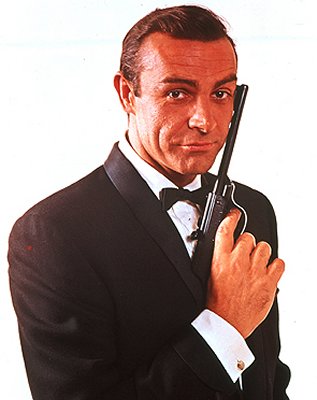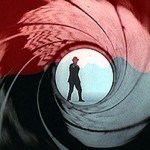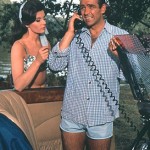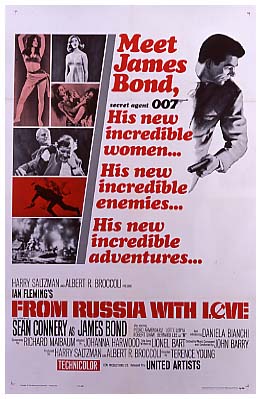
What was the impact of Dr. No and how did From Russia With Love build on this success? With the UK’s ITV network now mounting a season of ‘classic’ James Bond movies, the JBIFC takes the opportunity to look back on the first two Sean Connery 007 movies and some of the continuities between the two.
In hindsight, although cinema audiences in Britain loved the debut of Ian Fleming’s secret agent on the big screen in 1962, some of the critical reaction to the first 007 movie had been rather mixed and opinion seemed divided.
However, two British critics in particular, Alexander Walker and Dilys Powell, were very enthusiastic and this gave the film a big boost. Moreover, Dr. No’s release in Britain saw the movie take a record £700,000 at the box office, a huge sum in the early 1960s. Clearly, the public had fallen in love with all things Bond.
It thus became inevitable that United Artists would back a second James Bond film, while the EON producers Harry Saltzman and ‘Cubby’ Broccoli were now quietly confident that they would be able to make at least 3-4 Bond films before interest waned (!).
Licence to Thrill
Interestingly, as Bond co-producer Cubby Broccoli later observed, ‘The huge impact of Dr. No was evident not just in its wide box-office appeal around the world, but also in the boost it gave to Fleming’s books’. Suddenly, the sales of Fleming’s 007 paperbacks soared: ‘James Bond was away and running’. It appeared that, with their new star Sean Connery, and with a formula that combined thrills, tongue-in-cheek humour, sex and exotic locations, the EON producers had found the key to cinematic success the like of which had not been seen before.
There was pressure, of course, to just repeat the same formula. Yet, as John Brosnan pointed out in his book James Bond in the Cinema (1972), From Russia With Love (FRWL) – although it had the same basic ingredients (fast action, exotic settings, violence, and sex) – ‘differed greatly from its predecessor’. In fact, it stood out from many of the other films in the series, which had tended to follow the science fiction style of Dr. No. Instead, FRWL kept the ‘fantastic’ elements to a minimum and adopted more of a Hitchcock-style thriller approach, which was in fact in line with Fleming’s original novel.
Bond is Back
Nevertheless, in terms of continuities, FRWL also offered some welcome and familiar ingredients to build on the success of Dr. No. For a start, the director Terence Young, who had played an instrumental role in shaping and guiding Sean Connery’s transition to suave physicality as James Bond, agreed to return.

In addition, Maurice Binder’s brilliantly simple but innovative gun-barrel, introduced in Dr. No, returned in style for FRWL, as a prelude to the atmospheric pre-credits sequence (something that would become a fixture of all subsequent Bond movies). Similarly, John Barry’s excellent rendition of Monty Norman’s James Bond theme was also retained for FRWL.
The decision was also made to have SPECTRE, Blofeld’s ruthless criminal organisation (which had been mentioned and discussed in Dr. No), a key element again in FRWL. As Kronsteen at one points comments to Blofeld, after explaining the trap they have set for 007, the agent the British would ‘undoubtedly send’ would be 007, the man responsible for the death of SPECTRE’s operative Dr. No. Another piece of continuity to give FRWL some familiar anchors for cinema audiences was the return of the MI6 HQ office, where Connery’s Bond engaged in some repartee with Moneypenny (played again by Lois Maxwell) and went to be briefed by his boss ‘M’ (played again by Bernard Lee).
 The female character Sylvia Trench, who Bond had first encountered briefly in the early stages of Dr. No, returned in FRWL, seemingly as Bond’s regular girlfriend. Indeed, actress Eunice Gayson, who played Trench, revealed in later interviews that Terence Young’s plan (he had started pre-production work on Goldfinger) had originally been for Trench to be a regular character in the Bond series, and plans had been put in place for her to reappear in the third Bond movie (which, in the end, of course, went to director Guy Hamilton, who wanted to stamp his own brand on the series).
The female character Sylvia Trench, who Bond had first encountered briefly in the early stages of Dr. No, returned in FRWL, seemingly as Bond’s regular girlfriend. Indeed, actress Eunice Gayson, who played Trench, revealed in later interviews that Terence Young’s plan (he had started pre-production work on Goldfinger) had originally been for Trench to be a regular character in the Bond series, and plans had been put in place for her to reappear in the third Bond movie (which, in the end, of course, went to director Guy Hamilton, who wanted to stamp his own brand on the series).
Cutting Edge
Another major ingredient in the success of the two movies was also, arguably, the retention of Peter Hunt as editor. Indeed, Hunt’s pioneering fast-action cutting style, tested out so successfully in Dr. No, reached a new zenith in FRWL. Possibly the best example was the tough fight on the Orient Express that takes place between Bond and ‘Red’ Grant (played by Robert Shaw), a sequence which – even today – takes one’s breath away when viewed on the big screen.
Lastly, another piece of continuity between the two movies worth bearing in mind was the support of Ian Fleming. Although he had at first seemed doubtful about the choice of Connery as Bond, he had been quickly won round. He had attended the opening screenings and parties for both movies, praised Connery’s performances, and had shown strong interest in the production of both Dr. No and FRWL, visiting the sets of both films and chatting to Sean Connery. Tragically, although the Bond author had visited the set of Goldfinger at Pinewood in 1964 and chatted again to Connery, Fleming died a few weeks later and did not get to see the third 007 film.
As with Dr. No, FRWL opened in London to high praise and huge public footfall at the box office. As one magazine, Entertainment Today, aptly put it, the film ‘proved to countless skeptics that the James Bond films were being made by people who knew what they were doing…’. In like vein, the film critic in the UK’s Observer newspaper commented: ‘The Bond films are brilliantly skilful’. Bond was very much here to stay.

